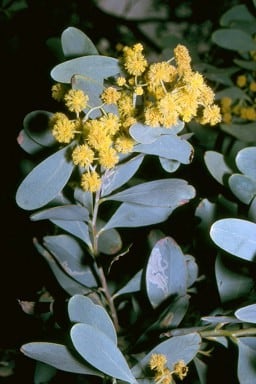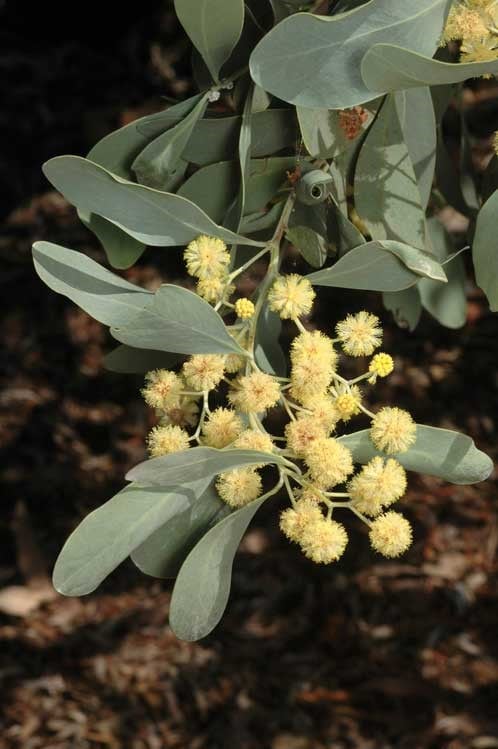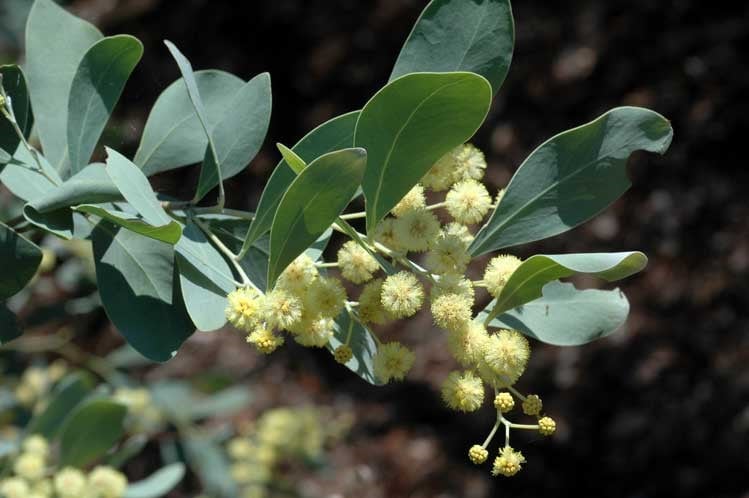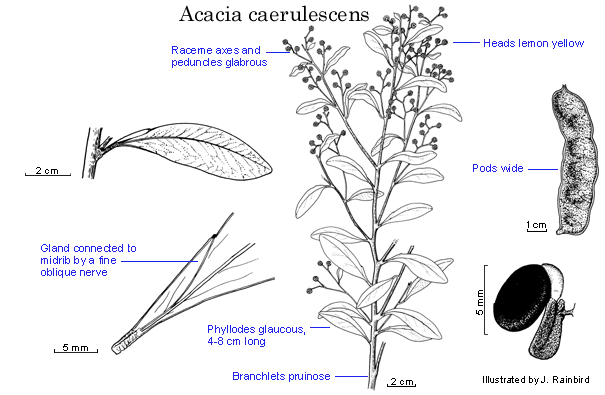Acacia caerulescens Maslin & Court
WATTLE
Acacias of Australia
Common Name
Buchan Blue, Buchan Blue Wattle
Family
Fabaceae
Distribution
Restricted to the Lakes Entrance–Buchan district, Vic., where it is known only from the Swan Reach–Tambo Upper region and Lake Tyers N to the Murrindal area. Remaining populations are under threat by land clearing, etc., fide B.R.Maslin & A.B.Court, Muelleria 7: 133 (1989).
Description
Tree or tall shrub to 10–15 m high, often ±pyramidal in outline. Branchlets commonly pruinose, glabrous. Phyllodes obovate to oblanceolate or elliptic to narrowly elliptic, 4–8 cm long, 1.5–3 cm wide, narrowed and often shallowly recurved near base, obtuse, glaucous, pruinose when young, glabrous, with midrib central or towards the adaxial margin, finely penninerved; gland 5–25 mm above the pulvinus, connected to pulvinus by a fine oblique nerve. Inflorescences racemose but racemes often in panicles 4–9 cm long; raceme axes 1–3 (–4.5) cm long, glabrous; peduncles 6–8 mm long, rather slender, glabrous; heads globular, mostly 20–30-flowered, lemon yellow. Flowers 5-merous; sepals united. Pods stipitate, 5–12 cm long, 14–22 mm wide, chartaceous, pruinose, glabrous. Seeds longitudinal to longitudinally oblique, elliptic, 5–6 mm long, dull, black; funicle thick, red-brown, constricted at junction with aril.
Phenology
Flowering commences in Nov.
Habitat
It occurs as remnant populations in clay over limestone in Eucalyptus woodland or forest; its distribution appears to be strictly associated with limestone geology.
Specimens
Vic.: Stony Ck crossing of the Princes Hwy, Toorloo Arm, D.E.Albrecht 2276 (CANB, NSW, PERTH); 4.5 km from Buchan towards Wulgulmerang, 22 May 1988, B.R.Maslin s.n. (CANB, PERTH); Murrindal, N.A.Wakefield 4103 (MEL).
Notes
Closely related to A. obliquinervia which has less glaucous and often longer (5–17 cm) phyllodes with the gland 0–12 mm above the pulvinus and lacking an associated fine, oblique nerve extending to the pulvinus, stouter peduncles 1.5–5 mm long. Acacia obliquinervia is widespread and occurs at higher altitudes than A. caerulescens. Sometimes resembling the more westerly distributed A. sporadica which is a low, root-suckering shrub with non-pruinose branchlets, phyllode gland infrequently connected to midrib by an obscure oblique nerve and transverse seeds.
FOA Reference
Data derived from Flora of Australia Volumes 11A (2001), 11B (2001) and 12 (1998), products of ABRS, ©Commonwealth of Australia
Author
Minor edits by B.R.Maslin
B.R.Maslin
This identification key and fact sheets are available as a mobile application:
URL: https://apps.lucidcentral.org/wattle/
© Copyright 2018. All rights reserved.












